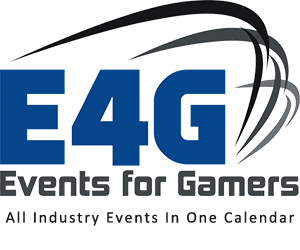 NVIDIA has come a long way from the days of being the “gaming graphics card company,” after it unseated then acquired rival 3dfx, around the turn of the millennium. Nowhere is this clearer than NVIDIA’S own ecosystem conference, GPU Technology Conference (GTC 2016), which focuses on a diverse array of topics, like internet of things, deep learning, computational physics, augmented reality and virtual reality, and of course, game development. NVIDIA addresses these topics through the lens of its own technologies, embedded and discrete chips and virtualized cloud computing. Some of NVIDIA’s most high-impact, splashy announcements still directly affect gamers and the kind of hardware they visualize their games with, on both the software and hardware side. What kind of news, for gamers, might there be to watch for?
NVIDIA has come a long way from the days of being the “gaming graphics card company,” after it unseated then acquired rival 3dfx, around the turn of the millennium. Nowhere is this clearer than NVIDIA’S own ecosystem conference, GPU Technology Conference (GTC 2016), which focuses on a diverse array of topics, like internet of things, deep learning, computational physics, augmented reality and virtual reality, and of course, game development. NVIDIA addresses these topics through the lens of its own technologies, embedded and discrete chips and virtualized cloud computing. Some of NVIDIA’s most high-impact, splashy announcements still directly affect gamers and the kind of hardware they visualize their games with, on both the software and hardware side. What kind of news, for gamers, might there be to watch for?
Pascal-Based Graphics Card
One of the biggest expected highlights (but not confirmed) is an announcement by NVIDIA CEO Jen-Hsun Huang during the Tuesday morning keynote, of the long-awaited Pascal GPU architecture in a flagship graphics card product. In other words, a pricey but powerful graphics card with a lot of new capabilities for high-end gaming needs may not be far around the corner.
For the full list of known Pascal capabilities and comparisons against other chipsets, this article on WCCF Tech covers the gamut of specs.
VR
VR (and AR, too) is getting a spotlight at most technology-oriented conferences this year, so why not at GTC 2016, too? Full-featured virtual reality requires a lot of capability under the PC hood to run, and evolving hardware and software requirements for VR will likely keep it that way.
NVIDIA has highlighted eight virtual reality startups to be featured at the first VR Showcase to lead off the daylong startups-focused Emerging Companies Summit, which is embedded within the GTC event. Among these companies is Sixense Entertainment, which develops solutions for full-body immersion in virtual worlds, through 3-D modeling. Another with a gaming tilt is DeepStream VR, a company that has created an escapist and immersive virtual world for patients dealing with pain to do without drugs.
Bonus round: Here’s a few of the sessions from the dedicated 45 talk-strong VR track in the schedule NVIDIA has highlighted for GTC 2016.
Vulkan API and Games
Prominent within GTC 2016’s game development and real-time graphics tracks are talks focused on the impact of the recently launched 1.0 version of the Khronos Group Vulkan graphics and compute API standard. In a nutshell, Vulkan is a high-level, low-overhead cross-platform API designed to compete with OpenGL. Vulkan has quickly found early adoption among many game developers and hardware manufacturers, NVIDIA included. As NVIDIA states in a blog post, gamers should care about this new standard, because:
Vulkan’s low latency and high-efficiency lets developers add more details and more special effects to their games, while still maintaining great performance. Because a Vulkan driver is thinner with less overhead, application developers will get fewer performance surprises. This translates to smoother, more fluid experiences.
GTC 2016 will feature an array of Vulkan talks, covering, among other topics, an API overview and rendering techniques, since low-overhead rendering is one of the main benefits of putting the Vulkan API to use.
There’s certain to be much more to talk about from GTC 2016 over the next week and beyond, so be sure to follow Events for Gamers’ coverage on the website or social media for more news from NVIDIA’s conference!



